FrOSCon 2024
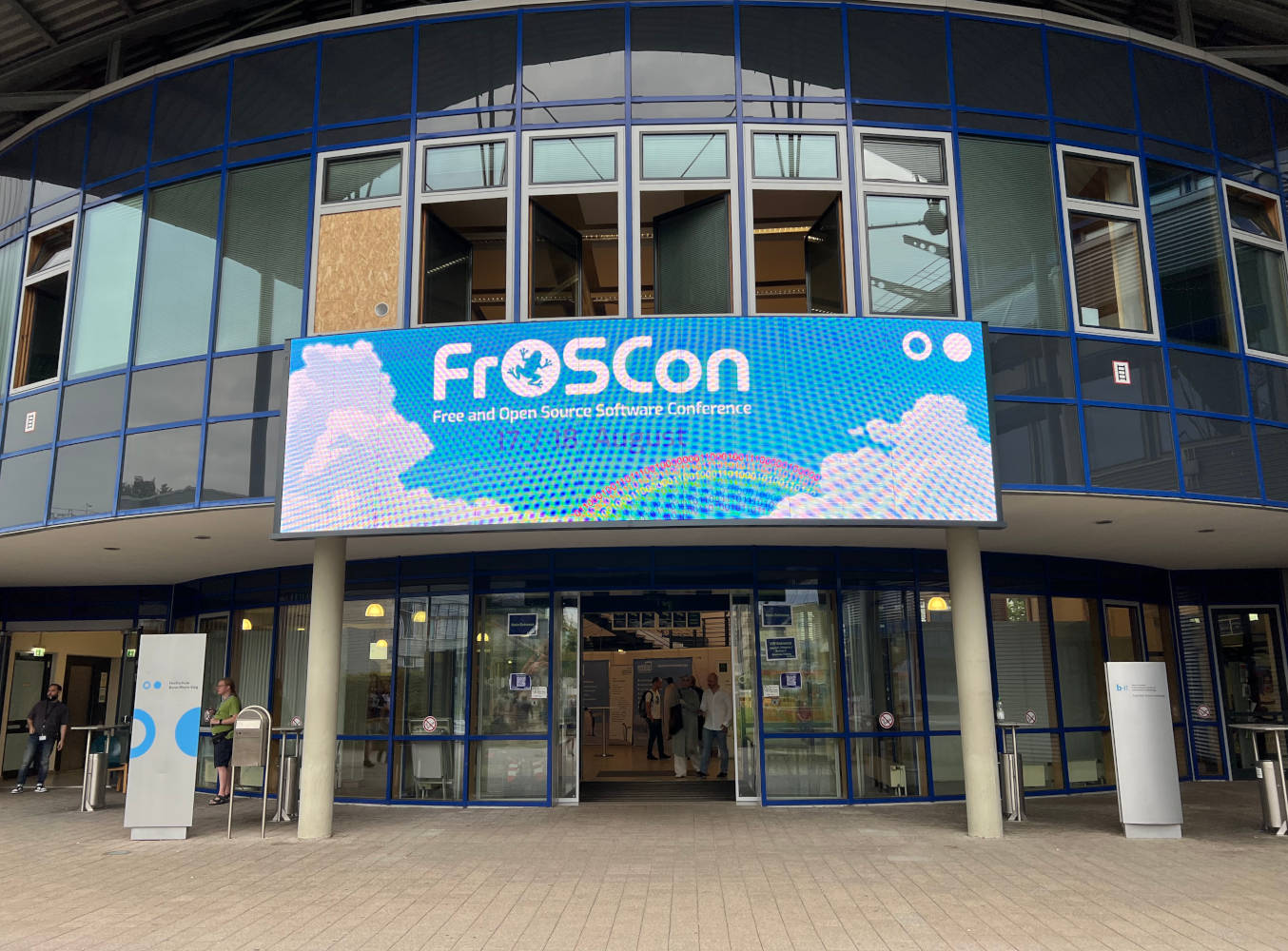
Last weekend, the 19th FrOSCon conference took place as a hybrid event at Bonn-Rhein-Sieg University of Applied Sciences in Sankt Augustin on 17/18 August 2024. The programme again consisted of many lectures and workshops, numerous stands and the obligatory Social Event on Saturday evening invited participants to exchange ideas. Around 1,500 people took part in the event - 200 more than last year.
Talks
The lecture programme was once again extensive with 83 workshops and lectures - and, as always, free of charge. For me, there were some exciting presentations on both days - much more exciting than in previous years. The backlog of presentations that I want to look at afterwards has also not yet been fully processed. As usual, the individual sessions were streamed live by the Chaos Computer Club video team (C3VOC) streamed live and made available online at short notice (via own mirror server).
In one of the first talks, Open Source-Lizenzen, Udo Meisen gave an overview of common open source licences and their legal implications - a topic I've always wanted to take a closer look at. Due to the licence changes of some large projects recently, the topic is more present than ever. I found the slides on the various GPL versions and their (in-)compatibility with other licences particularly interesting.
I also found the presentation 20 Jahre OpenStreetMap (📽️) by Falk Zscheile exciting. The project dates back to a time when aerial images and geodata were not generally accessible, but had to be obtained for a fee from state surveying offices. Conceived as a community project, volunteers were quickly found to help with the mapping - initially with external GPS receivers, dictaphones or pen and paper.
There are now more than 12 million accounts, of which around 50,000 make active changes every month. The project is also confronted with deliberate false information - for example to settle political conflicts (moving borders or renaming streets) or to manipulate real data games (adding non-existent beaches to catch rare Pokemon). OpenStreetMap also forms the basis for other specialised map projects - for example:
Jutta Horstmann gave one of the keynotes, Running the internet, under-funded and under-staffed? (📽️). In it, she addressed the largely desolate funding structures of our digital society. Using projects such as OpenSSL, GnuPG and Log4J, she demonstrated the devastating consequences that a lack of long-term maintenance and funding can have. She also named funding programmes and funds that are already improving this situation:
Finally, Horstmann presented numerous ways to finance and maintain an open source project in the long term.
With The Government and the Art of Infrastructure Maintenance (📽️), there was a presentation by Mirko Swillus, who works for the aforementioned Sovereign Tech Fund.
A special about the Sovereign Tech Fund was recently published in the FOCUS ON: Linux-Podcast. In addition to a wealth of information about the various funding programmes, it also contains a field report from the curl project.
I was no less interested in the presentation Jeder Meter zählt (📽️) by Jens Kühnel. He works as an IT administrator at the German Stock Exchange and outlined parts of his everyday life. One exciting insight was that - as stated in the title - literally every metre counts when it comes to cable lengths. Approximately 2 ns latency must be expected per metre of length - cable lengths are therefore kept short and uniform to ensure fairness for different parties when trading shares.
NTP is too imprecise for the purposes of the exchange and has therefore been replaced by PTP (Precision Time Protocol). In addition to the deactivation of common power-saving methods (e.g. ACPI C-States), the technical adjustments to the infrastructure also include the use of tuned. By the way, real-time kernels are not used, which is due to excessive implications for the applications used. Also, Infiniband has proven to be too expensive to maintain and has been replaced by Ethernet. Maintenance is only possible at weekends, without exception.
In the presentation Moderne Linux Kommandozeilenwerkzeuge - Edition "Eiche RUSTikal" (📽️), Martin Leyrer demonstrated more than 20 command line tools developed in the Rust programming language. Many of the tools presented are reimplementations of well-known tools and supplement them with useful functions and improved output. The presentation was interactive - good questions were rewarded with manual cuts.
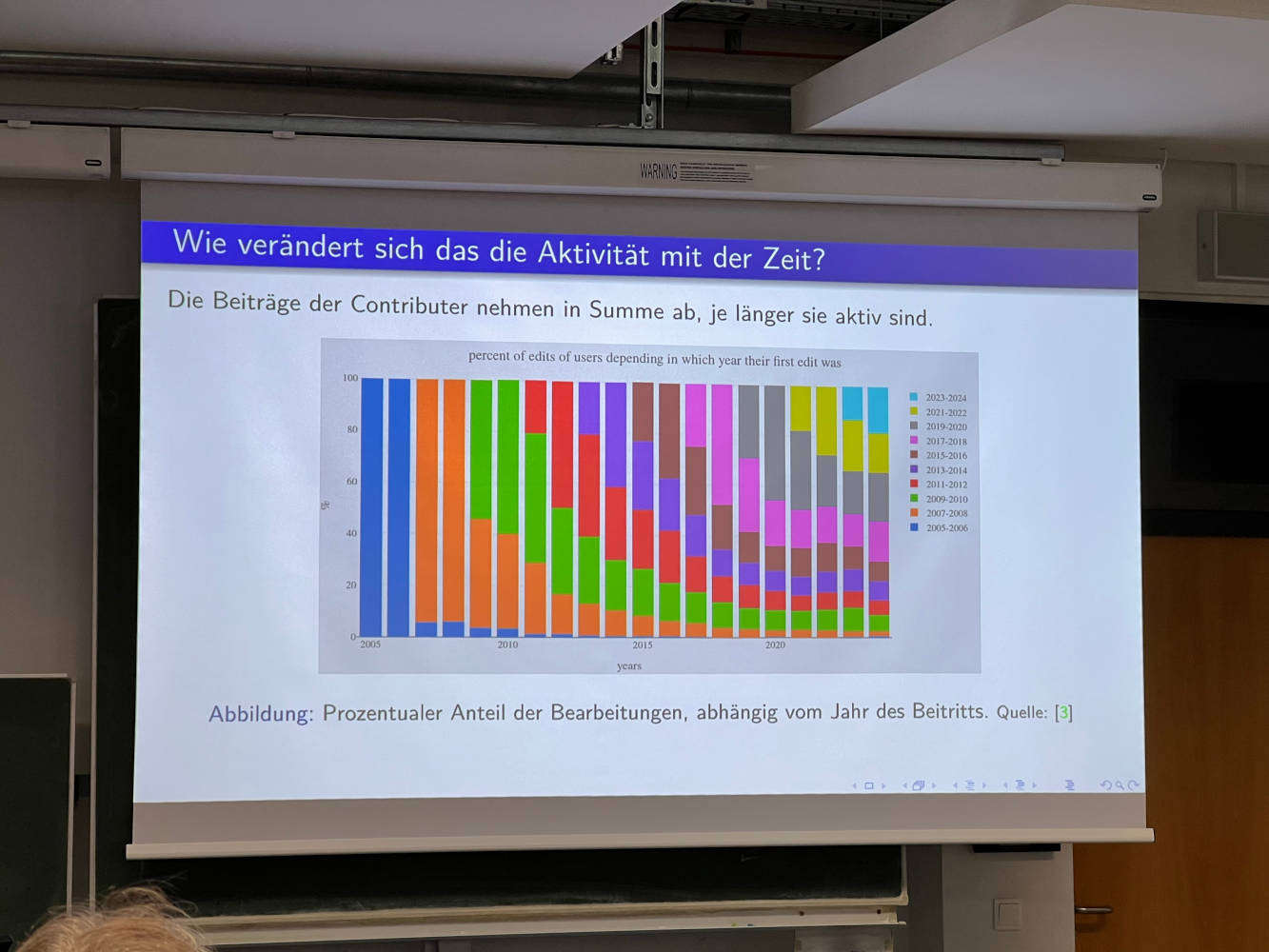


Eines meiner Highlights war der Vortrag Next-Gen Desktops: Ublue-OS immutable desktop (📽️) by Christoph Stoettner. In it, he described his experiences with the Linux distribution Bluefin. This is based on Fedora Silverblue, but differs from it in that it uses bootable containers. As a result, the project pursues a cloud-native approach, which enables bootable system images to be created automatically using CI/CD pipelines - for example with BlueBuild recipes. Stoettner explained the required tooling and other tools, such as yafti, which automatically installs Flatpak applications the first time they are started. Compared to conventional desktops, there is a slightly higher memory requirement for image snapshots - an effect that should also be familiar to NixOS users. On the other hand, older versions of the operating system can be booted at any time - ideal for failed updates.
As every year, a State of the Union: Das Open-Source Jahr 2024 (📽️) presentation by Michael Kleinhenz, Oliver Zendel and Nils Magnus was part of the schedule. The trio highlighted anniversaries, news and curiosities of the year from an open source perspective.
The presentation NeoVim - beyond q! (📽️) by Michael Weimann was very instructive. As a supplement to the previously offered workshop (also available as Git repository), this included not only the UNIX text editor history but above all technical details about neovim. Started as a vim fork, neovim offers numerous innovations, such as support for the Language Server Protocol, which can extend the editor with programming language-specific syntax and semantic functions. Plugins were demonstrated using practical examples.
The presentation Enterprise IT: Ein agiler Realitätsabgleich (📽️) by Martin Leyrer and Christoph Stoettner was also very entertaining. Both have been working in supposed enterprise IT projects for many years and thus had numerous sometimes bizarre, shocking but in any case amusing stories at the ready. In addition to technical debts, the stories centred on clear shortcomings in personnel management.
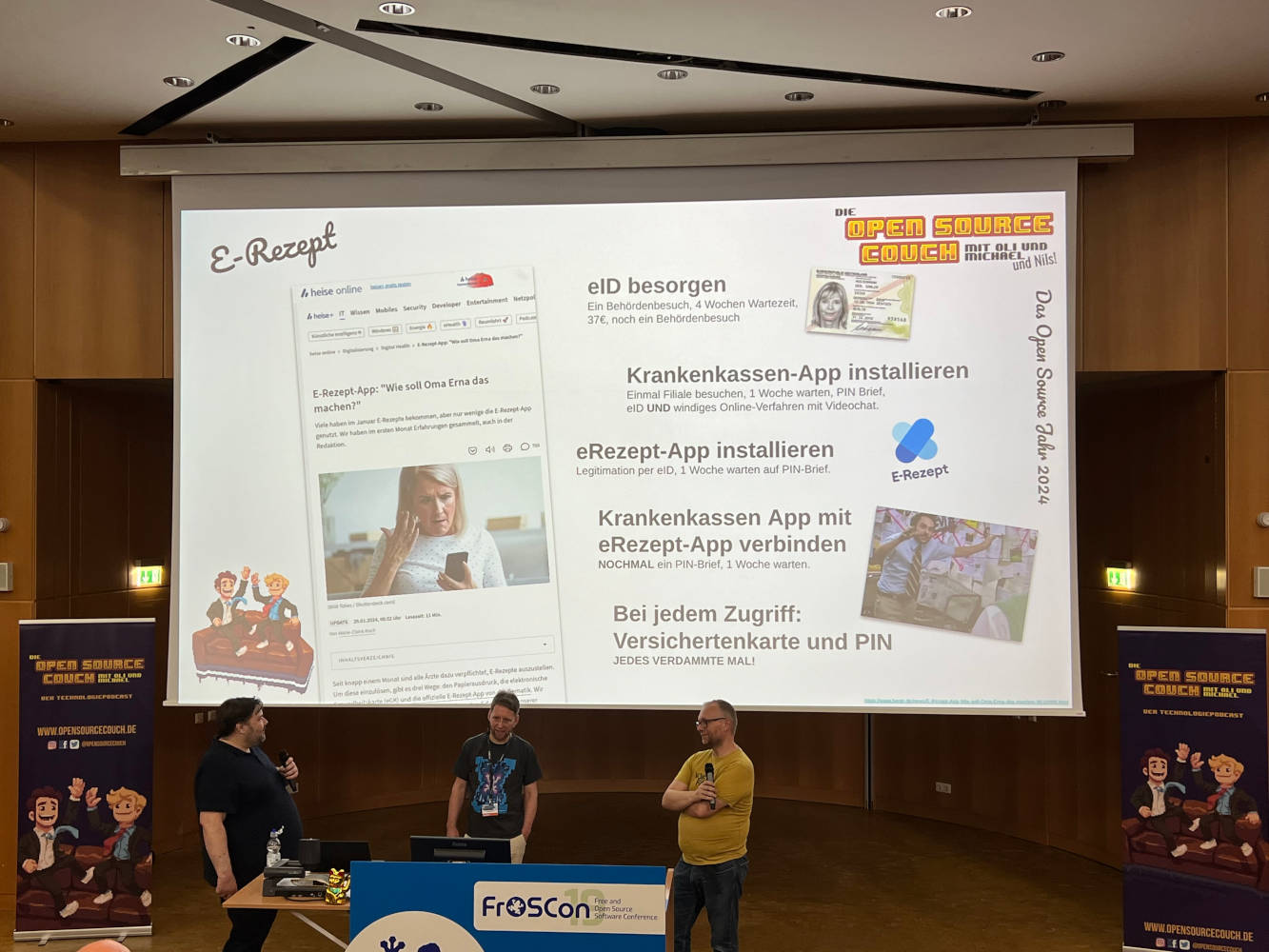

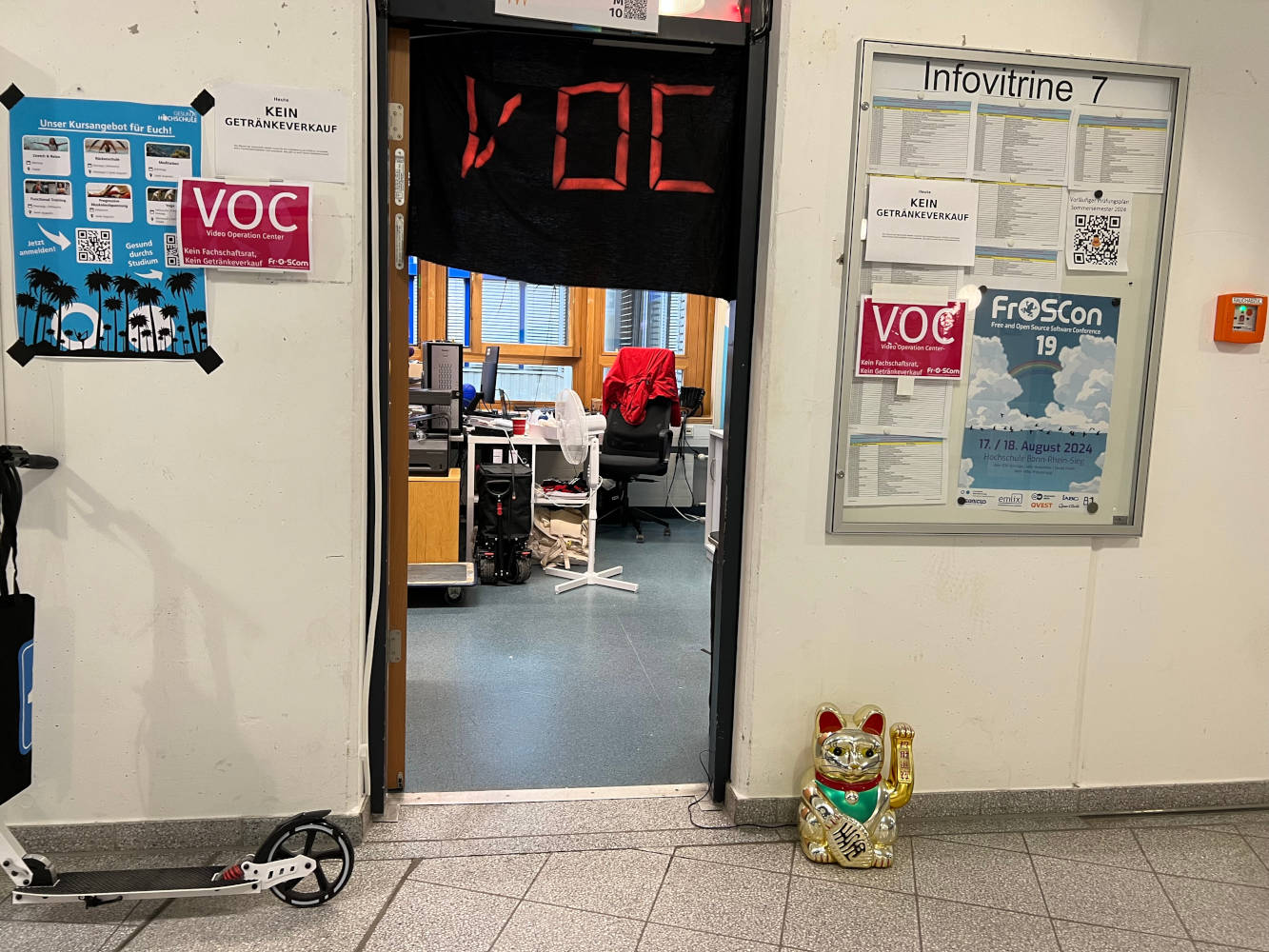
I myself was also able to contribute to the programme with a presentation about ThinkPads (📽️). This centred on the history and nerd culture of the devices. In addition to a summary of IBM's company history, the lively development history of the numerous model series was highlighted. In particular, the sometimes very curious devices (laptops with integrated printer, second screen or fold-out keyboard) and designs were worth a closer look. Interspersed trivia facts complemented the photos of the devices shown.
There was a lot of interest in this presentation, which I hadn't expected. The room was largely full and even after the talk there was a lot of interaction on site and online - thank you for that! 🤩
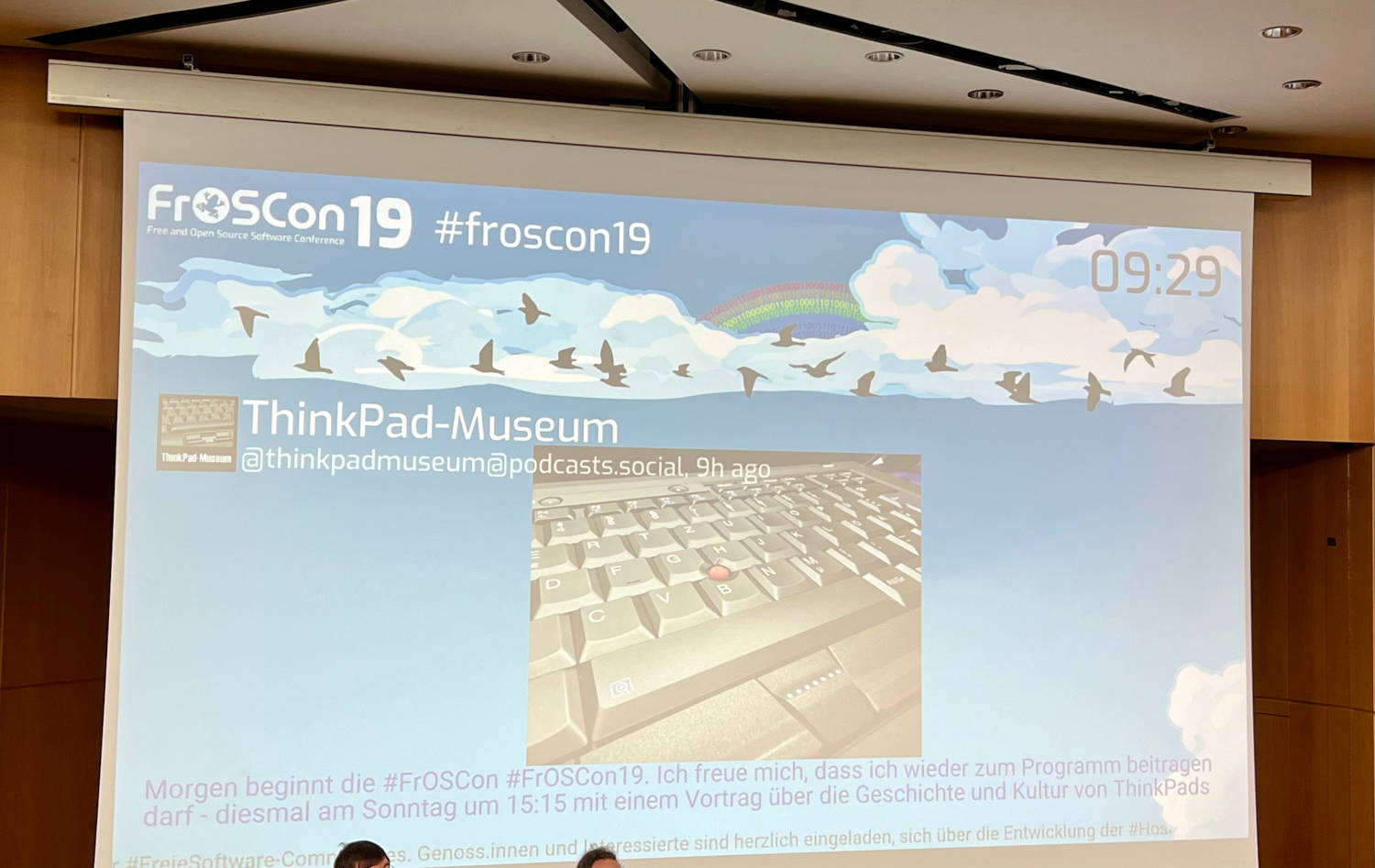

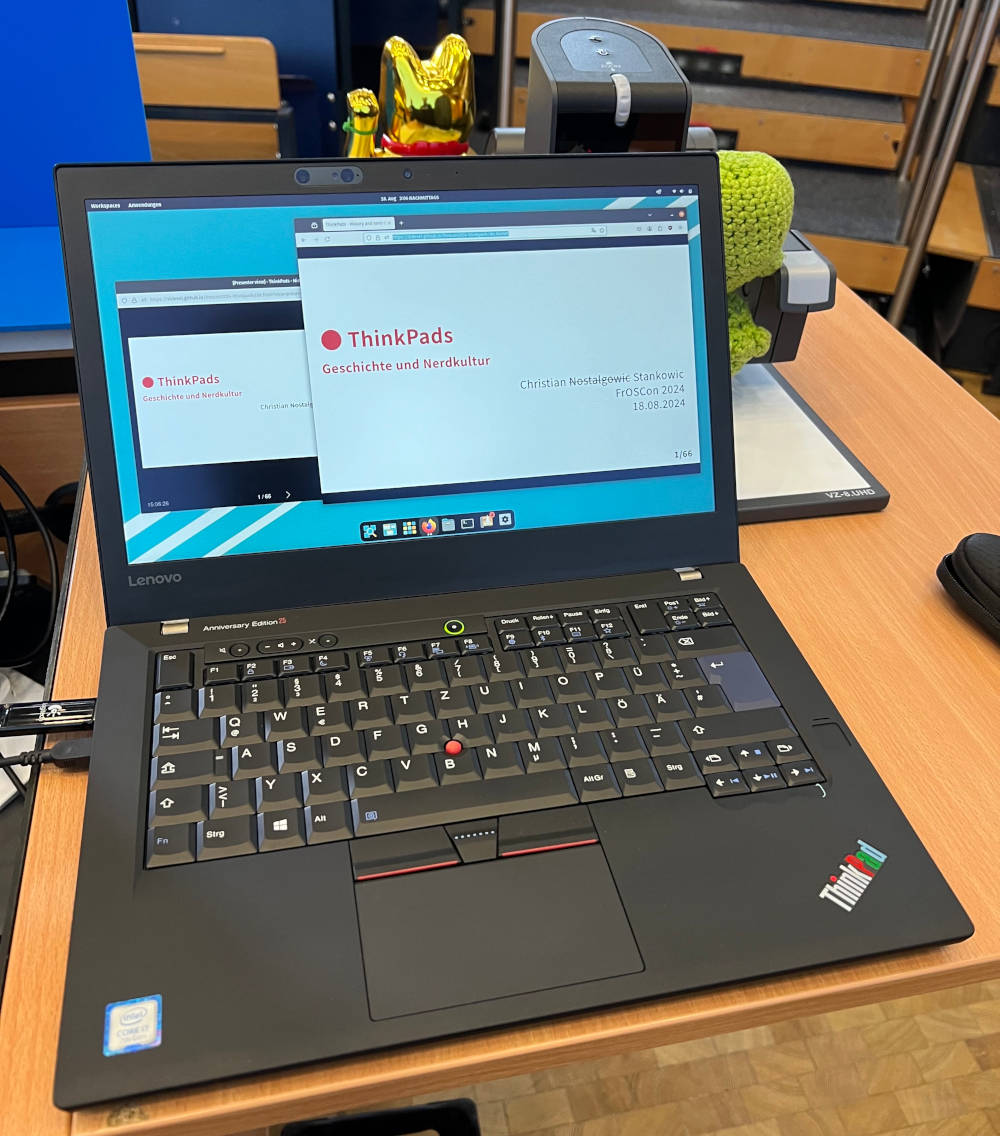
The Social Event was proactively moved indoors this year due to bad weather forecasts - even if the heavy rain didn't materialise. The participants were spread over two floors and the bar was set up on the upper floor. This meant that there were more groups than usual - but the atmosphere was still pleasant and the conversations were relaxed.
Booths
This year there were more than 30 stands from projects, organisations and companies. In 9 project rooms special workshops and presentations were offered - e.g. about Linux on Mobile, WordPress or RIOT OS. This year I didn't have time to visit all of them - compared to previous years, I was very busy with presentations this time.
One stand that I always visit, however, is that of TUXEDO Computers. I always find it interesting to see the new products. A lot has happened at TUXEDO in recent years - and so there were new devices again this year.
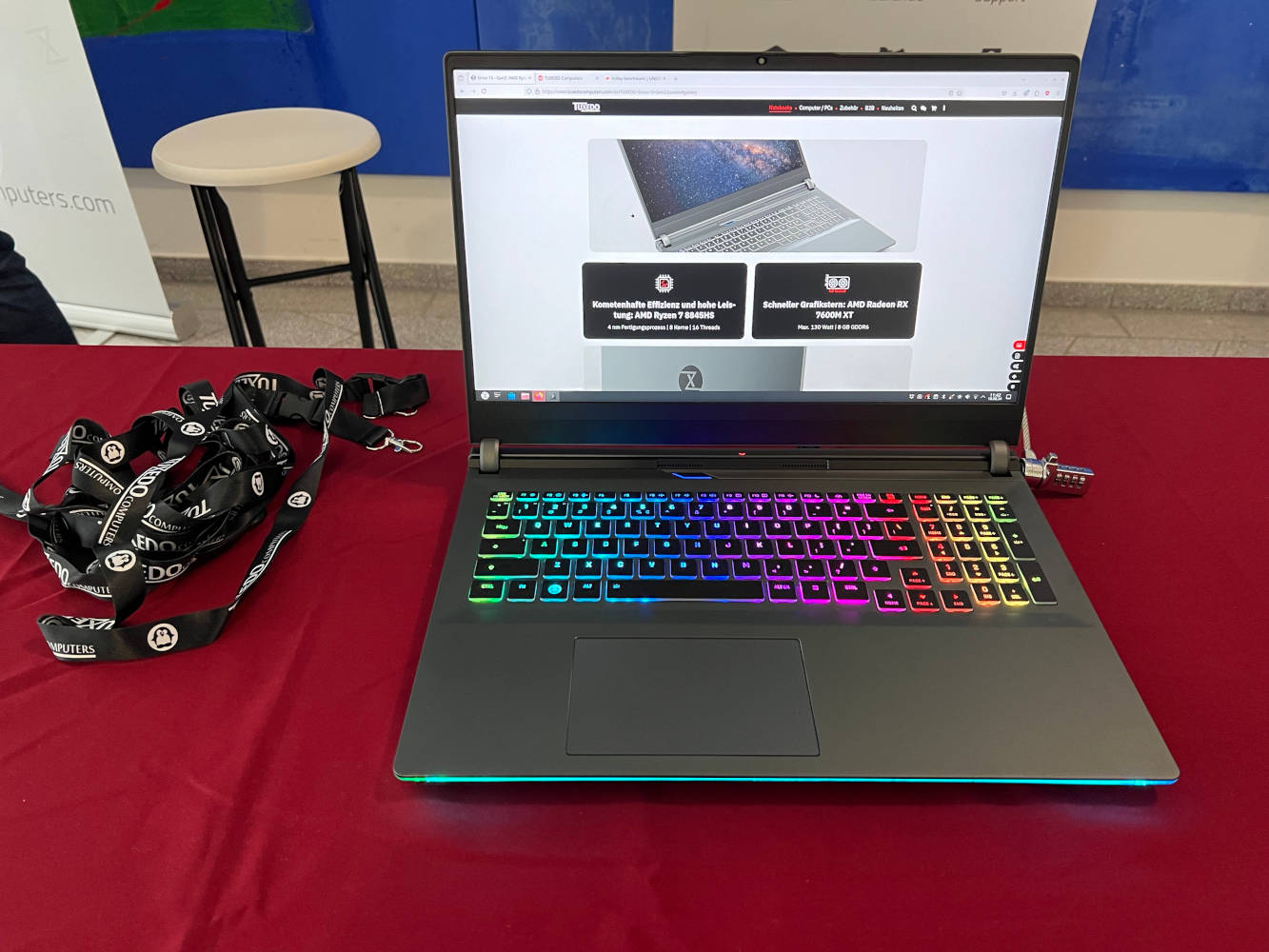
For example, the Sirius 16 Gen 2 was exhibited - a 16" gaming notebook with up to 96 GB RAM. In addition to USB 4.0, there is also a WQHD display with 165 Hz. The 80 Wh battery delivers up to 6 hours of battery life - which is probably mainly due to the AMD Ryzen 7 8845HS CPU and AMD Radeon RX 7600M XT GPU. The keyboard is of course RGB-illuminated.
The current 9th generation of the InfinityBook Pro 14 could also be tested. In addition to an Intel version, there is also a more efficient AMD version - both with powerful H and HS CPUs. An 80 Wh battery is also used here, which offers up to 10 (Intel) or 13 hours (AMD) of runtime. The RAM can also be configured to a maximum of 96 GB. The casing has a very high-quality feel and is now made of full aluminium, the only display option offered is a 3K screen.
I found a conversation with an employee regarding the ARM device currently under development particularly interesting. TUXEDO recently announced work on an ARM prototype. As with competitor devices (Lenovo, DELL, Microsoft), the device is based on the Qualcomm Snapdragon X Elite SoC. As good Linux support is a top priority for TUXEDO, there are high hopes for the project. I am very curious to see what news we will read on this topic in the coming months - it would be very welcome if the first manufacturer actually offers usable Linux support for the SoC. Previous competitor devices officially come without Linux support - the list of drivers still to be implemented is long.
Conclusion
As every year, I really enjoyed the conference. Due to the significantly larger number of visitors, more conversations were possible - so I saw a lot of new and old faces. The social event was fun despite the poor weather and indoor set-up.
I'm already looking forward to the 20th FrOSCon, which will probably be something very special 🙂